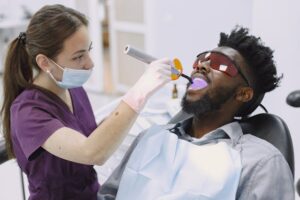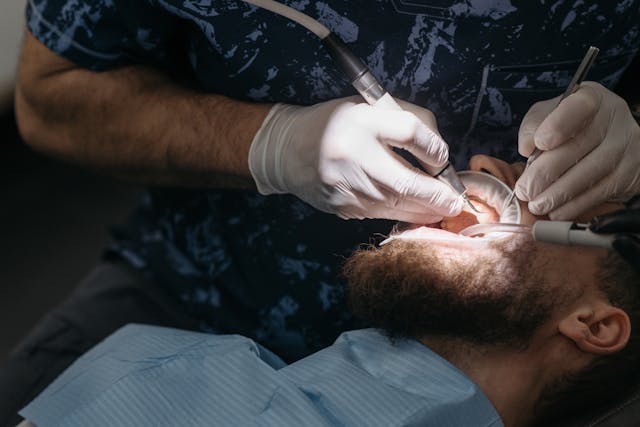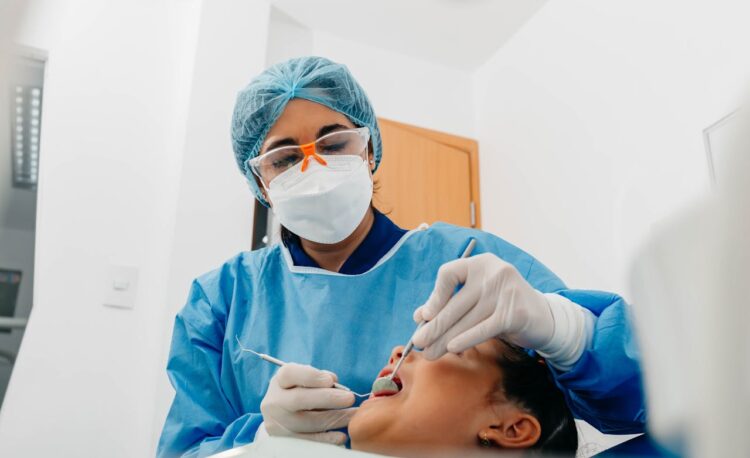Are you dreading the thought of undergoing dental surgery? Or are you simply exploring alternatives for a less invasive solution? Look no further. In this blog post, we’ve compiled a list of effective and safe choices that can help you avoid the operating table while still achieving optimal oral health. From innovative technologies to natural remedies, get ready to discover exciting alternatives that will make your smile brighter without the need for traditional dental surgery.
Laser Dentistry for Gum Treatments
 Traditional gum surgery, often involving incisions and sutures, can be intimidating. Laser dentistry, however, offers a minimally invasive alternative for gum treatments. Lasers are used to remove diseased tissue, reshape gums, and even treat periodontal disease. This approach reduces bleeding, swelling, and discomfort, promoting faster healing compared to traditional methods.
Traditional gum surgery, often involving incisions and sutures, can be intimidating. Laser dentistry, however, offers a minimally invasive alternative for gum treatments. Lasers are used to remove diseased tissue, reshape gums, and even treat periodontal disease. This approach reduces bleeding, swelling, and discomfort, promoting faster healing compared to traditional methods.
Laser dentistry is an excellent option for those seeking a less invasive solution for gum-related issues. Orthodontics Middlesbrough dental practices tend to offer such services.
Invisalign for Orthodontic Corrections
For individuals with misaligned teeth or bite issues, traditional braces were once the primary solution. However, Invisalign has emerged as a popular and less intrusive alternative. Invisalign employs clear, removable aligners that gradually shift teeth into their desired positions. This technology eliminates the need for metal brackets and wires, offering a discreet and comfortable solution for orthodontic corrections.
Platelet-Rich Plasma (PRP) Therapy for Tooth Extractions
Tooth extractions, often associated with postoperative pain and extended recovery, can now be improved with Platelet-Rich Plasma (PRP) therapy. This innovative technique involves using a patient’s own blood to create a concentrated solution of growth factors. When applied to the extraction site, PRP accelerates the healing process, reduces inflammation, and minimizes discomfort. This alternative can lead to a quicker and less painful recovery for individuals undergoing tooth extractions.

Tooth-Colored Fillings Instead of Traditional Amalgam Fillings
While traditional amalgam fillings have been used for decades, tooth-colored fillings have become a popular alternative. Composite resin fillings match the natural color of teeth, providing a more aesthetically pleasing option. Beyond their cosmetic appeal, tooth-colored fillings bond directly to the tooth structure, needing less removal of healthy tooth material compared to amalgam fillings. This alternative offers a durable and discreet solution for treating cavities.
Non-Surgical Root Canal Treatment
Root canal treatment is a well-known dental procedure that can often be performed without surgery. Advances in endodontics allow for non-surgical root canal treatments that effectively address infected or inflamed tooth pulp. This alternative involves cleaning and disinfecting the root canal system without the need for surgical intervention. Non-surgical root canal treatments are typically more comfortable for patients and result in faster recovery times.
Air Abrasion for Conservative Cavity Preparation
 Air abrasion is an alternative to the traditional dental drill for cavity preparation. This technique uses a focused stream of abrasive particles to remove decayed tooth structures without the need for drilling. Air abrasion is a more conservative approach, preserving more of the healthy tooth structure. This alternative is often preferred by individuals who experience anxiety or discomfort associated with traditional drilling methods.
Air abrasion is an alternative to the traditional dental drill for cavity preparation. This technique uses a focused stream of abrasive particles to remove decayed tooth structures without the need for drilling. Air abrasion is a more conservative approach, preserving more of the healthy tooth structure. This alternative is often preferred by individuals who experience anxiety or discomfort associated with traditional drilling methods.
Dental surgery alternatives provide patients with effective and less invasive options for addressing various oral health concerns. From laser dentistry for gum treatments to Invisalign for orthodontic corrections, these alternatives offer a range of benefits, including reduced discomfort, faster recovery times, and improved aesthetics. When faced with dental issues, it is crucial to explore these alternatives and discuss them with your dentist to determine the most suitable option for your specific needs.

